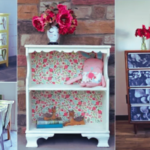Welcome to the discovery of the timeless elegance and historical importance of Plantation Style Homes. Originating in the antebellum South of the United States, these architectural marvels embody a unique mixture of grandeur, functionality and cultural heritage. With their sprawling verandas, stately columns, and expansive grounds. Farmstyle homes remind a sense of gracious living and refined charm.
In this introductory journey, we’ll delve into the origins, key features, and regional variations of plantation architecture. Giving insights into the enduring appeal and modern relevance of these iconic residences. Whether you’re a history enthusiast, an architectural aficionado, or simply intrigued by the beauty of Southern hospitality. Join us as we uncover the rich tapestry of Farm Style Houses.
History and Origins of Plantation Southern Antebellum Architecture
The history and origins of Plantation Architecture trace back to the antebellum period in the Southern United States, specifically during the 17th and 18th centuries. Inspired by European architectural styles. Plantation homes were initially built to accommodate large agricultural estates, particularly cultivating crops such as cotton, tobacco, and rice. The design of these homes evolved to suit the hot and humid climate of the region. Featuring elevated main floors, expansive verandas, and tall windows for ventilation. Plantation architecture also reflects the social hierarchy of the time, with grandiose residences serving as symbols of wealth and status for plantation owners.
Key Features of Plantation Style Homes
The history and origins of Plantation Architecture trace back to the antebellum period in the Southern United States, particularly during the 17th and 18th centuries. Influenced by European architectural styles, garden homes were initially built to accommodate large agricultural estates. Primarily cultivating crops such as cotton, tobacco, and rice. The design of these homes evolved to match the hot and humid climate of the region. Featuring high main floors, expansive verandas and tall windows for ventilation. Plantation architecture also reflects the social hierarchy of the time, with grandiose residences serving as symbols of wealth and status for plantation owners.
Regional Variations in Plantation Architecture in Southern Estates
Regional variations in Plantation Architecture across the Southern United States give fascinating insights into the wide range of cultural and environmental influences shaping these iconic homes. In the country of South Carolina and Georgia, for instance, plantation homes exhibit distinct Gullah-Geechee architectural features. Characterized by raised foundations, large windows, and broad piazzas to combat the region’s hot, humid climate and frequent flooding. Moving westward to the Mississippi River Valley, the grandeur of Greek Revival architecture dominates. With magnificent columns, symmetrical facades, and expansive grounds showcasing the wealth and power of plantation owners.
Further south in Louisiana, French Creole influences blend with Caribbean aesthetics. Resulting in elegant mansions with steeply pitched roofs, intricate ironwork, and roomy courtyards. Each region’s exclusive history, geography, and cultural heritage have left indelible marks on Plantation Architecture. Crafting a rich tapestry of styles that keeps on captivating and inspiring admirers all around the globe.
Interior Design Elements of Plantation Style Homes
The interior design of Plantation Homes reflects a flawless mixture of elegance, functionality, and Southern charm. Upon entering these grand residences, visitors are usually greeted by large, light-filled rooms embellished with intricate moulding. Ornate trim work, and high ceilings, raising a sense of grandeur and refinement. In the main living areas, such as the parlours, dining rooms, and oversized windows. French doors give picturesque views of the surrounding landscape while letting enough natural light to lighten up the space.
Rich hardwood floors are usually made from locally sourced materials such as heart pine or oak. Add warmth and character to the interiors, complementing the elaborate architectural details. Furnishings in Plantation Homes are typically a blend of traditional and eclectic styles. Featuring plush upholstered sofas, antique wooden furniture, and vibrant textiles that showcase the owner’s taste and heritage. Whether hosting grand gatherings or enjoying quiet moments of peace. The interior design elements of Plantation Homes create an atmosphere of timeless elegance and gracious living.

Landscaping and Outdoor Spaces in Colonial Revival Residences
Landscaping and outdoor spaces play an important role in the beauty of Plantation Estates. Lush gardens, manicured lawns, and majestic oak trees create a picturesque backdrop for these grand homes. Expansive verandas are often adorned with classic rocking chairs and swing benches. Invite residents and guests to relax and enjoy the serene beauty of the Southern landscape. So, fostering a sense of tranquillity and connection with nature.
Preservation and Restoration of Historic Southern Dwellings
Preservation and restoration efforts are significant in protecting the rich cultural heritage embodied by historic Plantation Homes.
- Historical Significance: Historic Plantation Homes hold immense historical importance, serving as tangible links to the past and providing valuable insights into the social, economic, and architectural history of their respective regions.
- Conservation Challenges: Preservation efforts face a number of challenges which include deterioration from age, natural disasters, and changes in land use, Necessitating complete conservation strategies to protect these irreplaceable treasures.
- Restoration Techniques: Restoration involves careful attention to detail, utilizing archival research, historical documentation, and traditional craftsmanship to accurately recreate. So, preserve the original features and allure of plantation homes.
- Community Engagement: Preservation initiatives usually depend on community involvement and support, nurturing partnerships among local governments, historical societies, preservation organizations, and private stakeholders to ensure the long-term sustainability of these historic landmarks.
- Educational Outreach: Preservation efforts also include educational outreach programs aimed at raising awareness about the cultural importance of Plantation Homes. Fostering an appreciation for their architectural beauty and historical context among current and future generations. Through careful preservation and restoration, these iconic landmarks keep on serving as living testaments to the rich tapestry of American history.
Influences of Farmstead Architecture on Contemporary Design
The influences of Plantation Architecture on contemporary design are identifiable. Modern architects get inspiration from the timeless elegance and functional layouts of historic plantation homes. Elements such as expansive verandas, graceful columns, and symmetrical facades are reimagined in contemporary residences, creating a sense of refined luxury and Southern charm. In addition to this, the incorporation of sustainable materials and energy-efficient features reflects a thorough approach to design. Making sure that the legacy of plantation architecture survives in the architecture of today.
Tips for Incorporating Plantation Style into Your Homes
Changing your space with the timeless beauty of Southern plantation houses can impart your home with Southern charm and elegance.
- Embrace Grandeur: Incorporate architectural elements such as tall columns, expansive verandas, and symmetrical facades to evoke the grandeur of plantation homes.
- Opt for Traditional Materials: Select materials like hardwood floors, crown moulding, and wrought iron accents to capture the classic aesthetic of plantation architecture.
- Focus on Comfort: Create inviting spaces with luxurious upholstered furniture, cosy textiles, and enough seating areas that encourage relaxation and hospitality.
- Integrate Natural Light: Maximize natural light by incorporating large windows, French doors, and skylights to create bright, airy interiors reminiscent of plantation homes.
- Landscape Thoughtfully: Improve your outdoor spaces with manicured lawns, lush gardens, and native vegetation. Moreover, embracing the landscape design principles usually found in plantation estates
Modern Interpretations of Southern Plantation-Inspired Houses
Modern interpretations of farmhouse-style homes blend traditional elegance with modern functionality. Creating residences that honour the architectural heritage while meeting the demands of modern living. Architects and designers incorporate elements such as open floor plans, energy-efficient features, and smart home technology into the design. Providing a seamless blend of comfort and sophistication. Additionally, maintains the iconic features of plantation homes, such as spacious verandas and grand entrances.
The modern interpretations usually emphasize sustainability and eco-friendly practices, reflecting a conscientious approach to preserving the environment. These updated versions of Plantation Houses pay homage to the past. Embracing the innovations of the present, making sure of their timeless appeal for generations to come.

Conclusion
Incorporating the timeless elegance of colonial mansions into modern living spaces is a journey that marries historical charm with modern functionality. So, embracing grand architectural features to choosing traditional materials and creating inviting interiors flooded with natural light. Moreover, Homeowners can capture the essence of Southern hospitality and refined living.
Thoughtful landscaping and community engagement in preservation efforts further enrich the experience. Making sure that the legacy of plantation architecture keeps on inspiring and enduring for generations to come. By embracing these tips and honouring the cultural heritage of plantation hometowns. Homeowners can create spaces that exude warmth, elegance, and a deep appreciation for history.
FAQs
What defines Plantation Style Homes?
Southern heritage homes are characterized by their grandeur, expansive verandas, tall columns, and symmetrical facades. Furthermore, they usually feature spacious interiors, and intricate detailing, and are usually situated on large estates or plantations.
How can I incorporate the Farmstead Style into my home?
You can incorporate Plantation Style into your home by embracing architectural elements such as columns and verandas. Choosing traditional materials like hardwood floors and crown moulding. So, creating inviting spaces with enough seating and natural light.
Are classic Southern residences sustainable?
While historic Plantation Homes may not have been designed with sustainability in mind modern interpretations usually integrate sustainable materials and energy-efficient features to lessen environmental impact.
How can I learn more about the history of Plantation Architecture?
You can explore the rich history of farmhouse Architecture through books, historical tours, and online resources. Lastly, Provided by historical societies and preservation organizations dedicated to documenting and celebrating this architectural legacy.








